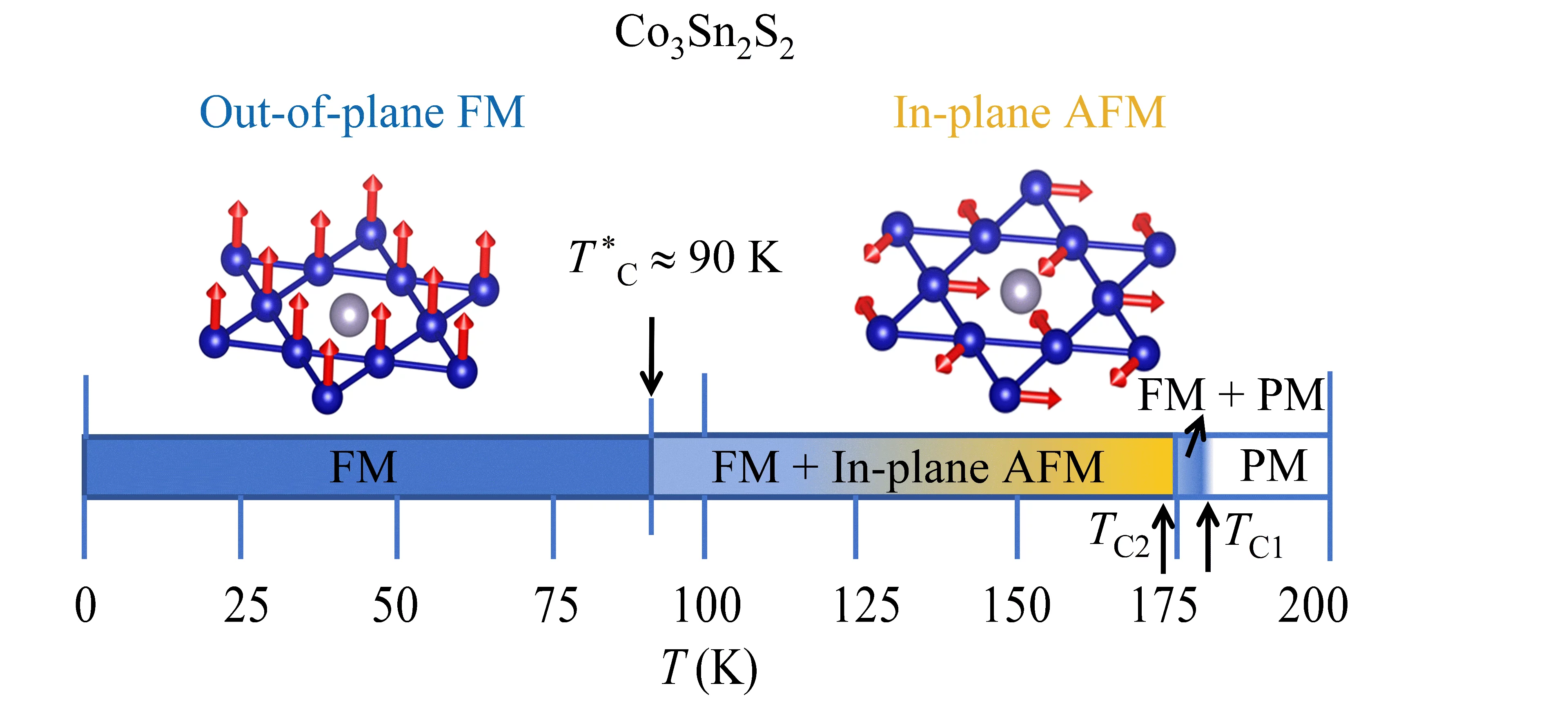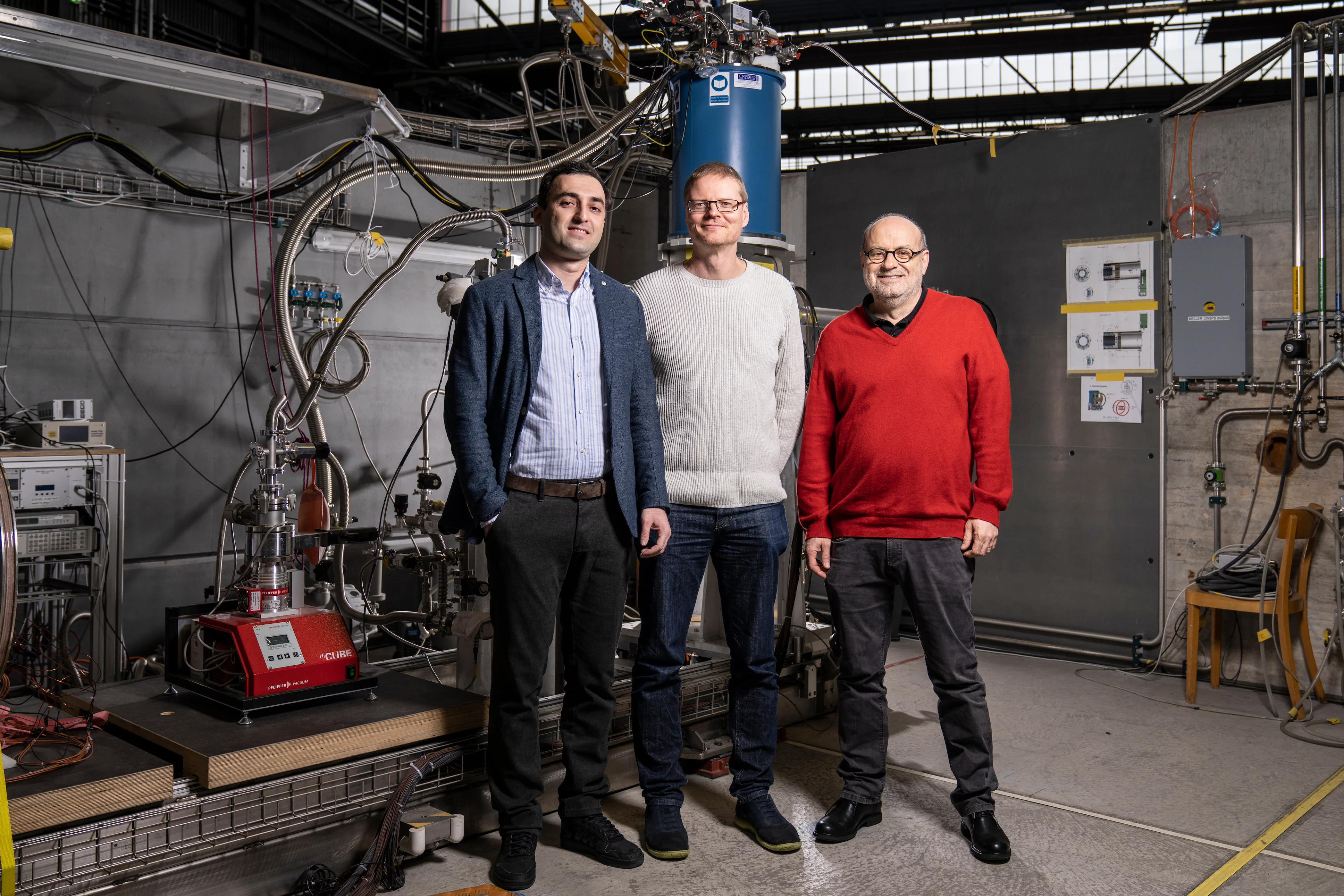Muon spin rotation experiments establish a quantitative link between the magnetic and topological electronic properties of the kagome magnet Co3Sn2S2 — and demonstrate effective ways for tuning these properties.
The most intriguing properties of quantum materials are, arguably, unconventional forms of magnetism on the one hand and phenomena arising from topological electronic band structures on the other. But even if topological materials rank among the most actively studied systems in condensed matter physics over the past decade — reflected not least in the 2016 Nobel Prize in Physics, awarded to pioneers of the field — materials in which the interplay between band topology and quantum magnetism can be studied experimentally remain exceedingly rare. One class of systems that is currently emerging as a platform for such studies are so-called kagome magnets based on transition metals. As they report in Nature Communications [1], an international team led by PSI scientist Zurab Guguchia has now identified in such a material a quantitative link between magnetism and topology. In the kagome magnet Co3Sn2S2, they discovered two competing magnetic orders, each of which may be associated with different topological properties. Furthermore, they demonstrated that the competition between the magnetic phases can be tuned both by applying external magnetic fields and by exerting hydrostatic pressure. Therefore the exciting perspective arises of a magnetic system in which topologically non-trivial states can be controlled, and thus explored, over a wide range of parameters.
A host of intriguing physics
Co3Sn2S2 has been shown before to display a large intrinsic anomalous Hall conductivity and a giant anomalous Hall angle, which are manifestations of large Berry curvature fields arising from a topological band structure, that is, from the presence of topological fermions. Also, the magnetic ground state of the material has been established to be ferromagnetic, and magnetic order was observed at temperatures up to 177 K. Guguchia et al. found now in ARPES experiments clear evidence for the existence of a topologically non-trivial band structure in Co3Sn2S2, and neutron-diffraction experiments both confirmed that the material ordered ferromagnetically at low temperatures and gave an estimate for the magnitude of the magnetic moment.
Fundamentally new insight came, however, in a series of muon spin rotation (μSR) experiments. The unique sensitivity of the method enabled measurements of local magnetic fields over the full temperature range of interest. Intriguingly, the researchers found two distinct magnetic phases. They identified these as the known ferromagnetic (FM) out-of-plane order of the cobalt spins starting from the lowest temperatures, and as antiferromagnetic (AFM) order within the kagome plane, which started to compete with the FM phase at around 90 K (see the figure above). This interpretation was fully supported by detailed magnetic-structure calculations. Further confidence that the system indeed separates into FM and AFM phases in this chemically homogeneous material was inspired by the fact that the muons have only one stopping site in Co3Sn2S2 — meaning that all of these ‘magnetic spies’ sit at the same crystallographic position — and the observation that decreasing FM order was accompanied by a complementary increase in AFM order on increasing the temperature. (The AFM phase had a slightly lower transition temperature though, 172 K, than the FM phase, which pertained up to 177 K, before the system became fully paramagnetic).
Topological fermions follow the spin structure
The question, then, was how the electronic band structure evolves with temperature as the competition between the two kinds of magnetic ordering plays out. To test this, the team recorded the anomalous Hall conductivity over the same temperature range in which the magnetic order was observed. Strikingly, they found a close correlation between that conductivity, which is directly related to topological properties, and the ferromagnetic volume fraction — probably the first time that such a clear correlation and, therefore, a direct quantitative link between magnetic and topological electronic properties has been found.
Adding to the excitement is that the competition between FM and AFM states can be tuned; not only by varying the temperature, but also through external magnetic fields and hydrostatic pressure, as Guguchia and his colleagues show. This implies, in turn, that Co3Sn2S2 could serve a versatile platform for exploring the rich physics emerging from the interplay of topological band structures and quantum magnetism.
Unique results thanks to unique instrumentation
This study relied strongly on the capability of μSR to locally probe tiny magnetic fields, and in particular on the worldwide unique instrumentation available at PSI, to perform μSR experiments in high magnetic fields and under high hydrostatic pressure. The neutron-diffraction experiments were performed at PSI as well, at the Swiss spallation source SINQ, and some samples were provided by the Solid State Chemistry Group at PSI, headed by Ekaterina Pomjakushina.
This work was further carried out in close collaboration with the group of Zahid Hasan at Princeton University, a leading group on quantum materials in which Guguchia is a visiting scientist, with the theory group of Titus Neupert at the University of Zurich, and with colleagues at Peking University and the University of Chinese Academy of Science, as well as at the Renmin University (China), who provided high quality crystals.
Contact
Dr. Zurab Guguchia
Paul Scherrer Institute, 5232 Villigen PSI, Switzerland
Phone: +41 56 310 5564, e-mail: zurab.guguchia@psi.ch
Original Publication
1. Tunable anomalous Hall conductivity through volume-wise magnetic competition in a topological kagome magnet
Z. Guguchia et al.
Nature Communications 11: 559 (2020).
DOI: 10.1038/ s41467-020-14325-w



